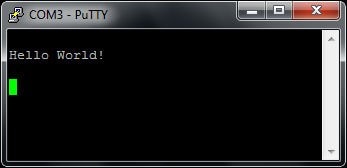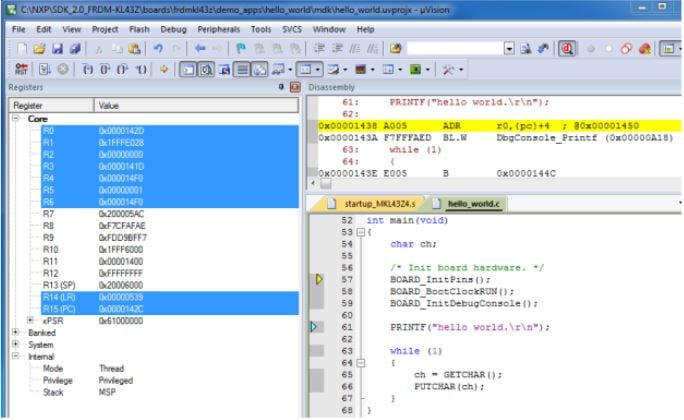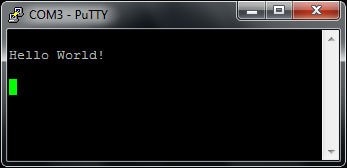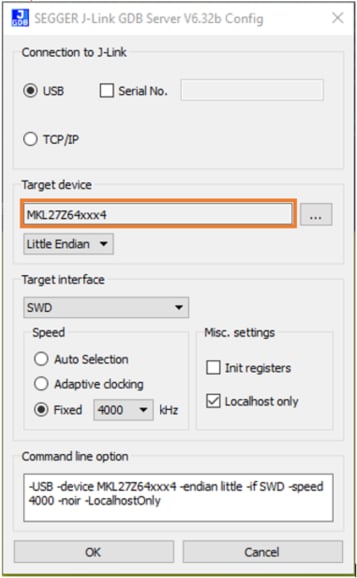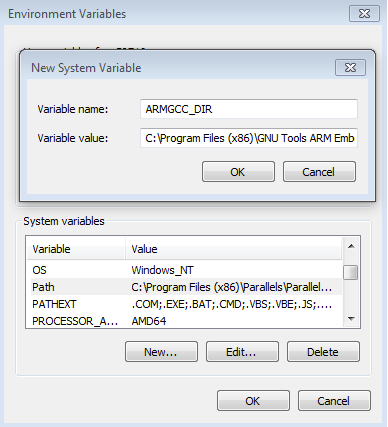Get Started with the FRDM-KL43Z
Contents of this document
-
Plug It In
-
Get Software
-
Build, Run
-
Create
Sign in to save your progress. Don't have an account? Create one.

Purchase your FRDM-KL43Z | KL43/KL33/KL27/KL17/KL13 | Dev Platform
Plug It In
Let's take your FRDM-KL43Z for a test drive! You have the choice of watching the sequence in a short video or following the detailed actions list below.
Get Started with FRDM-KL43Z Development Platform - How To
1.1 Attach the USB Cable

1.2 Run the Out-of-Box Demo
Your FRDM-KL43Z comes loaded with a "bubble level" demo that leverages the on-board accelerometer. When the board is flat, the LEDs are turned off, and when the board is tilted, the red or green LEDs gradually illuminate based on the degree of tilt on the X- and Y-axis.

1.3 Demo not working?
Did your board come in a box that looks like this?

You should be seeing the red and green LEDs toggling back and forth. It's OK to move onto the next step when you're ready
Still not working?
Try proceeding to the next steps to get other example applications running on your board. If you still have problems, try contacting us through the NXP Community.
Get Software
Installing software for the FRDM-KL43Z
2.1 Jump Start Your Design with the Kinetis SDK!
The Kinetis Software Development Kit (SDK) is complimentary and includes full source code under a permissive open-source license for all hardware abstraction and peripheral driver software.
Click below to download the SDK Release appropriate for your computer's operating system.
2.2 Install Your Toolchain
NXP offers a complimentary toolchain called Kinetis Design Studio (KDS)

Want to use a different toolchain?
No problem! The Kinetis SDK includes support for other tools such as IAR, Keil and command-line GCC.
2.3 PC Configuration
Many of the example applications output data over the MCU UART so you’ll want to make sure that the driver for the board’s virtual COM port is installed. It should install automatically when you plug the board in to your PC. If the driver does not automatically install, click here to download the installer.

With the serial port driver installed, run your favorite terminal application to view the serial output from the MCU's UART. Configure the terminal to 115200 baud rate, 8 data bits, no parity and 1 stop bit. To determine the port number of the FRDM-KL43Z's virtual COM port, open the device manager and look under the "Ports" group.
Not sure how to use a terminal application? Try one of these tutorials:
2.4 Tera Term Tutorial
Tera Term is a very popular open source terminal emulation application. This program can be used to display information sent from your NXP development platform's virtual serial port.
- Download Tera Term from SourceForge. After the download, run the installer and then return to this webpage to continue.
- Launch Tera Term. The first time it launches, it will show you the following dialog. Select the serial option. Assuming your board is plugged in, there should be a COM port automatically populated in the list.
- Configure the serial port settings (using the COM port number identified earlier) to 115200 baud rate, 8 data bits, no parity and 1 stop bit. To do this, go to Setup -> Serial Port and change the settings.
- Verify that the connection is open. If connected, Tera Term will show something like below in it's title bar.
- You're ready to go
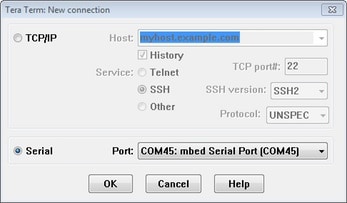

2.5 PuTTY Tutorial
PuTTY is a popular terminal emulation application. This program can be used to display information sent from your NXP development platform's virtual serial port.
- Download PuTTY using the button below. After the download, run the installer and then return to this webpage to continue.
- Launch PuTTY by either double clicking on the *.exe file you downloaded or from the Start menu, depending on the type of download you selected.
- Configure In the window that launches, select the Serial radio button and enter the COM port number that you determined earlier. Also enter the baud rate, in this case 115200.
- Click Open to open the serial connection. Assuming the board is connected and you entered the correct COM port, the terminal window will open. If the configuration is not correct, PuTTY will alert you.
- You're ready to go
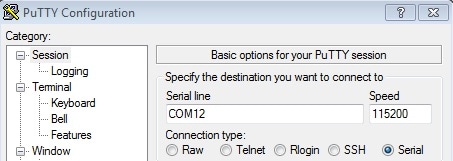
Build, Run
Build and Run SDK Demos on the FRDM-KL43Z
3.1 Explore the SDK Example Code
The Kinetis SDK comes with a long list of example applications code. To see what's available, browse to the SDK boards folder of your SDK installation and select your board, the FRDM-KL43Z(
To learn more about demo applications or driver examples, open the Kinetis SDK Demo Applications User's Guide, located in
3.2 Build, Run and Debug SDK Examples
If one or more of the example applications sound interesting, you're probably wanting to know how you can build and debug yourself. The Getting Started with Kinetis SDK guide provides easy, step-by-step instructions on how to configure, build, and debug SDK example code for all supported toolchains.
Use the guide below to learn how to open, build and debug an example application using the Kinetis Design Studio (KDS) IDE.
Using a different toolchain?
3.3 Use IAR
3.4 Use Keil® MDK
3.5 Use Arm® GCC
Create
Create an Application for the FRDM-KL43Z
4.1 Get SDK Project Generator
Let's create our own project and make a simple SDK-based application. NXP provides an intuitive, simple project generation utility that allows creation of custom projects based on the Kinetis SDK.
4.2 Run the SDK Project Generator
After extracting the ZIP file, open the utility by clicking on the KSDK_Project_Generator executable for your computer's operating system. Point the tool to your SDK installation path, name your project, and select the board that it uses as a reference. Click on the Quick Generate button to finish.

4.3 Open Your Project
Your new project will be located in
4.4 Write Some Code
Now, let's make our new project do something other than spin in an infinite loop. The SDK examples provide board support (BSP) macros to do various things specific to the board, including macros and definitions for items such as LEDs, switches and peripheral instances. To keep things simple, lets make the LED blink using the BSP macros.
Update the main() function in your project's main.c file with the following code:
volatile uint32_t delay;
BOARD_InitPins();
BOARD_BootClockRUN();
BOARD_InitDebugConsole();
PRINTF("myProject project\n\r");
// Enable the clock to the PORT module that the LED is on.
CLOCK_EnableClock(kCLOCK_PortD);
// Set the PORT configuration - from DISABLED -> GPIO.
PORT_SetPinMux(BOARD_LED_GREEN_GPIO_PORT,
BOARD_LED_GREEN_GPIO_PIN,
kPORT_MuxAsGpio);
// Initialize the green LED.
LED_GREEN_INIT(LOGIC_LED_OFF);
for (;;)
{
LED_GREEN_TOGGLE();
delay = 5000000;
while(delay--);
}
4.5 Build, Download, Run
With the changes made to your main() function, build your application. Once the build is complete, download the application to your board.
If you need help figuring out how to build, download or run an application, reference your tool-specific guide from section 3.2.
4.6 Success!
With the application downloaded, you will see the FRDM-KL43Z's green LED blinking. You can also view terminal output using PRINTF.





